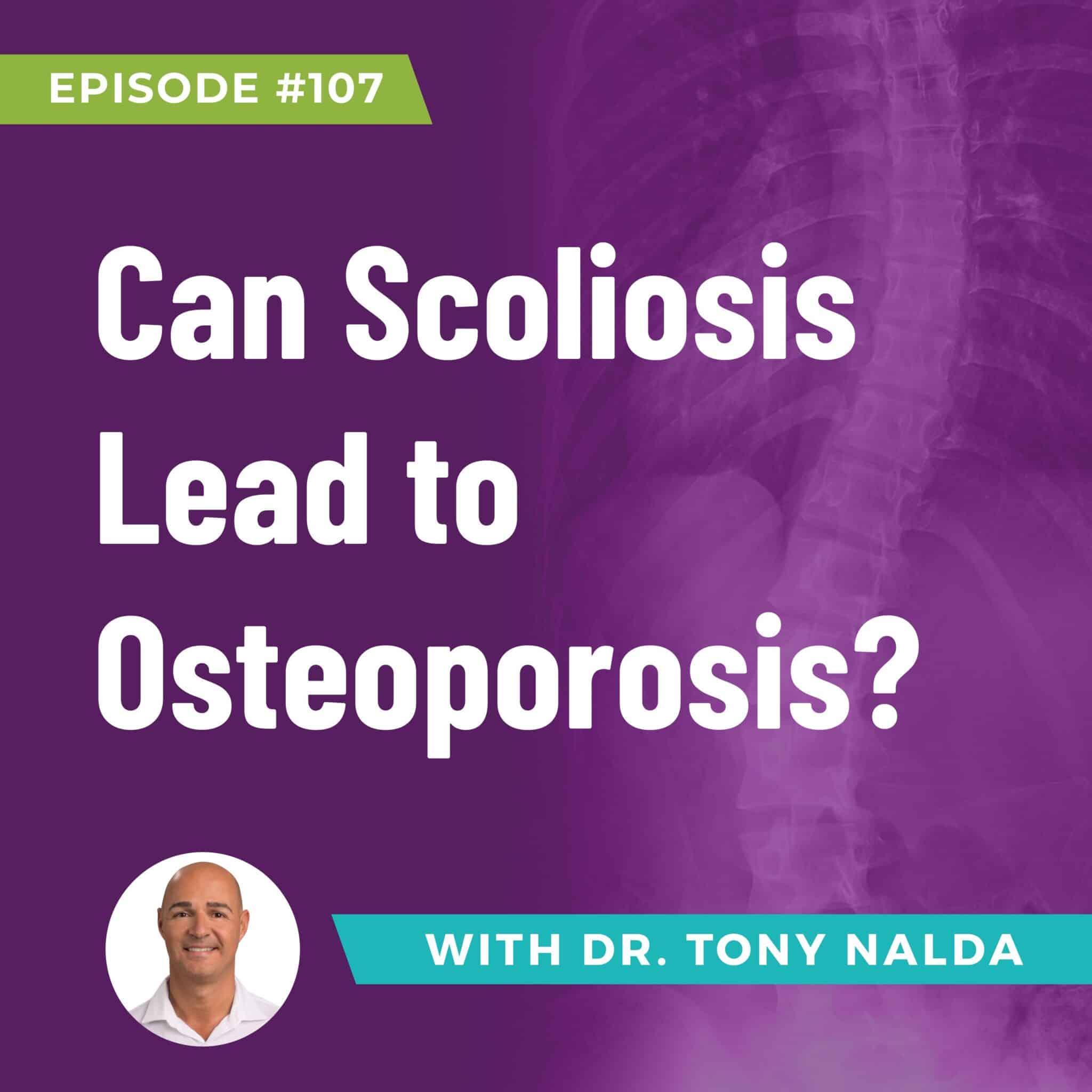Episode 107: Can Scoliosis Lead to Osteoporosis?
When talking about spinal health, the term "scoliosis" often sparks curiosity and concern. Characterized by an unnatural sideways curvature of the spine, scoliosis is not merely a matter of alignment; it involves a rotational component that adds a twist to the spine's curvature. To receive a diagnosis of scoliosis, the curvature, measured by the Cobb angle, must exceed 10 degrees, accompanied by a rotational component typically into the thoracic cavity.
Scoliosis vs Osteoporosis
You might wonder about the relationship between scoliosis and osteoporosis. Osteoporosis, a condition characterized by weakened and brittle bones prone to fractures, might seem unrelated to scoliosis at first glance. However, considering that bone is a living tissue constantly undergoing remodeling by osteoblasts (bone-forming cells) and osteoclasts (bone-resorbing cells), the connection becomes intriguing. Osteoporosis disrupts this delicate balance, hindering the proper replacement of old bone with new, leading to brittle bones vulnerable to injury, particularly compression fractures within the spine.
As we explore the prevalence and characteristics of scoliosis, it's essential to understand who is most susceptible. While scoliosis can affect individuals of all ages, adolescent idiopathic scoliosis emerges as the most common type, typically diagnosed between ages 10 and 18. In adulthood, idiopathic scoliosis and degenerative scoliosis take precedence, often extending from untreated or undiagnosed adolescent cases. This progression is influenced by factors such as gravity and asymmetrical weight bearing, particularly in degenerative scoliosis, which tends to manifest around menopausal changes in women.
Is there a connection between scoliosis and osteoporosis?
Studies suggest a correlation, with scoliosis potentially contributing to lower bone mass or vice versa. The mechanics of scoliosis, with asymmetrical weight bearing potentially influencing osteoblastic and osteoclastic activity, offer a plausible explanation. However, the exact nature of this link remains a subject of ongoing research and exploration.
What we do know is that both scoliosis and osteoporosis affect spinal health and function, predisposing individuals to spinal dysfunction and deformities. Therefore, proactive measures are crucial, especially for those in high-risk categories. The Scoliosis Reduction Center advocate proactive treatments aimed at addressing the progressive nature of scoliosis while promoting spinal strength, alignment, and functionality. By addressing the root causes and supporting spinal health the aim is to provide long-lasting relief and improved quality of life.
To learn more about scoliosis and osteoporosis, check out Dr. Tony Nalda's podcast.
Artlist.io 847544
Podcast: Play in new window | Download
Subscribe: RSS
Dr. Tony Nalda
DOCTOR OF CHIROPRACTIC
After receiving an undergraduate degree in psychology and his Doctorate of Chiropractic from Life University, Dr. Nalda settled in Celebration, Florida and proceeded to build one of Central Florida’s most successful chiropractic clinics.
His experience with patients suffering from scoliosis, and the confusion and frustration they faced, led him to seek a specialty in scoliosis care. In 2006 he completed his Intensive Care Certification from CLEAR Institute, a leading scoliosis educational and certification center.
About Dr. Tony Nalda
 Ready to explore scoliosis treatment? Contact Us Now
Ready to explore scoliosis treatment? Contact Us Now








